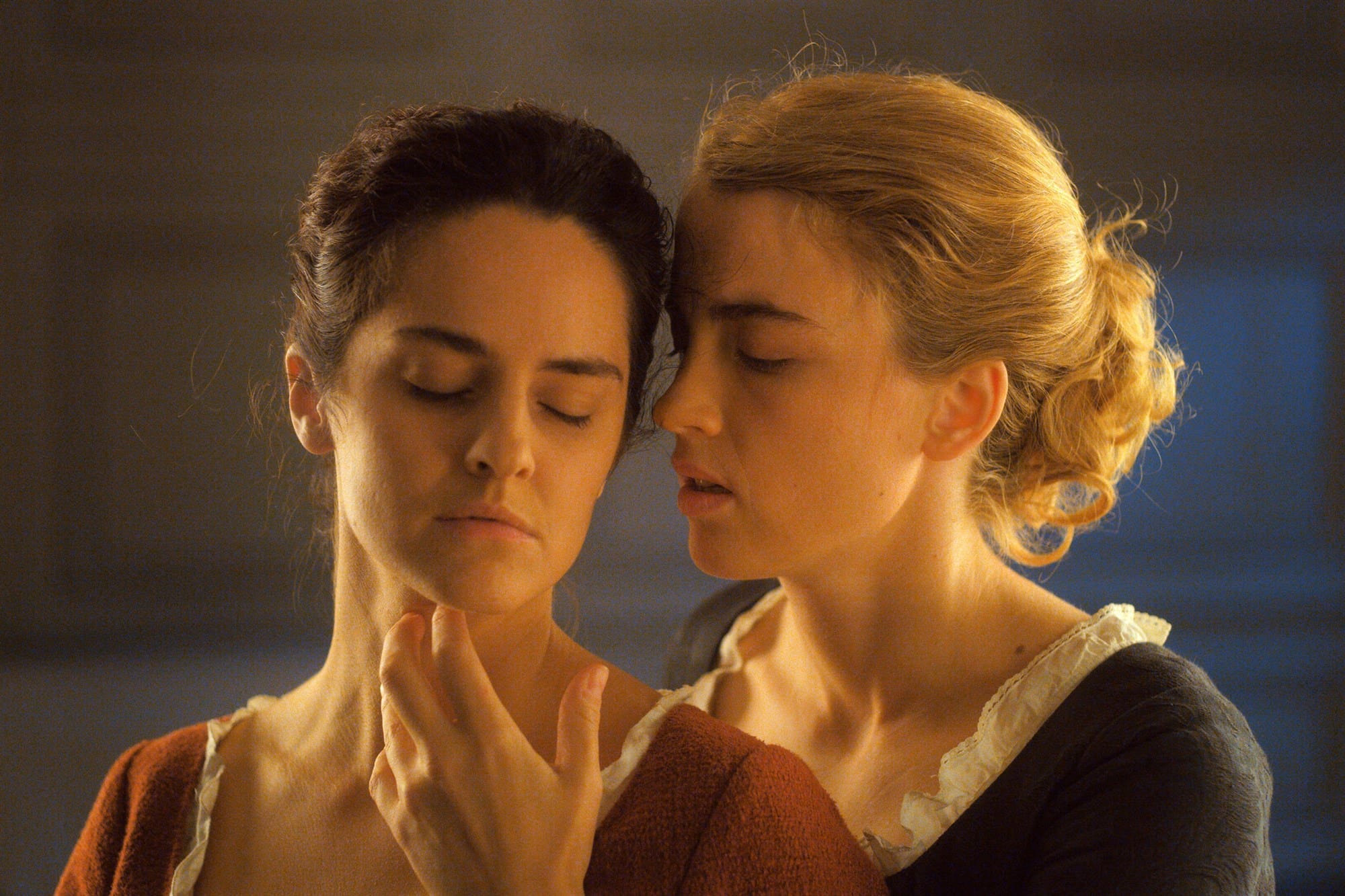
Half love story, half journey into the mind of an artist, Portrait of a Lady on Fire is a movie about throwing all of yourself into what you care about. Perhaps because of the themes it explores, this new romance from French director Céline Sciamma feels so alive. It’s practically bursting off the screen with emotion and passion, despite its reserved characters onscreen trying to stifle their true feelings. It’s almost impossible not to fall under its spell.
Told in flashback, this critically acclaimed Cannes Film Festival alum follows Marianne (Noémie Meríant), a painter hired by a mysterious woman who calls her to a relatively isolated island for a most unusual job. Héloise (Adêle Haenel) is the last hope for her family – she needs to marry a wealthy man, and her mother (Mariane’s employer) is desperate to find her a suitor. The only problem is that Hêloise refuses to sit for a painter, and without a portrait to show potential husbands, a marriage is all but impossible. Marianne is to paint Héloise in secret by posing as the young woman’s companion and accompanying her on walks across the island. But as the two women become closer and a romance forms between them, the idea of playing a part in Héloise’s marriage becomes more and more harrowing for Marianne.
One of the film’s most pleasant surprises is that it doesn’t become about the cliched, often heteronormative definition of a happy ending. We all love watching couples run into the sunset together, sure, but to hope for such an ending here would feel like a misunderstanding of the film. Portrait of a Lady on Fire dares to suggest that a romance is no less legitimate even if it’s short and unsustainable, and that two people can have a major influence on one another without spending the rest of their lives together. Héloise is not so much against the idea of marriage because of her queerness, but because the financial obligation and her lack of choice in the matter rob her of agency. Similarly, Marianne dislikes marriage and is uninterested in finding a husband, but the suggestion is that it’s because she wants to focus on her work as an artist, and doing so while married would be a burden. Instead, the two grow to understand and empathize with one another, while also giving into their undeniable chemistry.We don’t need the suspense of will they/won’t they and can just spend time getting to know them.
But the real key to this film’s splendid success is its director. Céline Sciamma is so in control of her movie’s tone that it feels like a film she’s been wanting to tell for her whole life, having clearly visualized every frame of the film. Some of the early shots are drenched in this melodramatic mystery, as the two women struggle to figure one another out. But later, as they get to know each other, the spark between the two leads practically jumps off the screen. Even as the film takes a more leisurely pace to its third act, Sciamma remains completely in control of her film’s tone and manages to transmit emotion to her audience. It’s stunning work.
And, as is fitting for a film about the art world, the film is gorgeous to look at. Claire Mathon’s cinematography is luscious, with shots that are not only aesthetically thrilling but help carry the same sense of emotion that Sciamma’s direction is trying to supply. As the two lead characters fall in love, the camera always captures their eyes and facial expressions with an intense attention to detail that make the love feel palpable, while also looking so beautiful that individual frames could be printed and hung in a museum. And while there are only a handful of costumes to marvel as, costume designer Dorothée Guiraud has helmed two of the most memorable outfits of the year. The dresses that both Héloise and Marianne wear throughout the film almost feel like characters themselves.
But perhaps the best compliment I can give Portrait of a Lady on Fire is that its final act has a moment that felt like a perfect, definitive ending… but then it kept going. At first I worried the otherwise excellent film would overstay its welcome, only for what felt like its new ending to be even more emotionally satisfying. And then, just as I thought the film would end, it pulled the same trick all over again. That’s the real sign of a master director: she knows every single step her film should take, and your job as a viewer is to just sit back and let her show you how its done. The result is one of the most beautiful movies you’ll see this year.


Comments are closed.